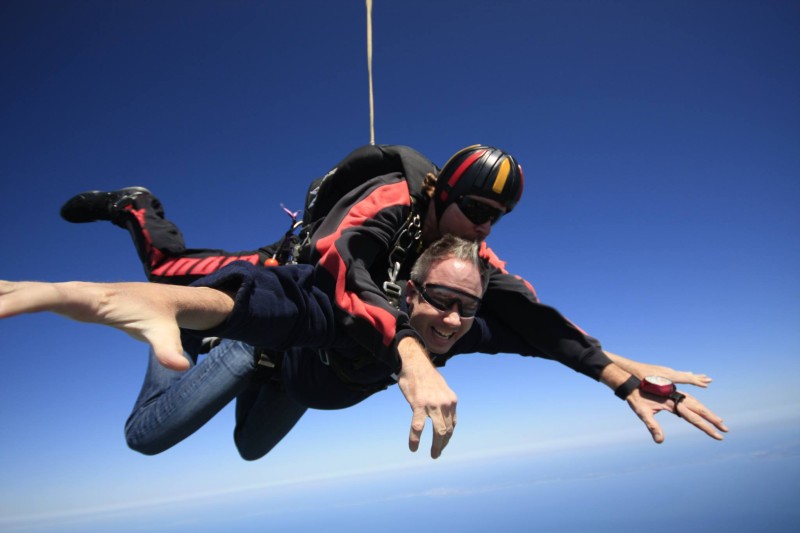Do Wearables and Health Apps Belong in the Doctor’s Office?

Do Wearables and Health Apps Belong in the Doctor’s Office?
Apple’s smart watch is only the latest gadget with quasi-medical aspirations. The watch joins a fast-growing wearables industry worth between $3 billion and $5 billion, according to Credit Suisse. Add to that nearly 50,000 health apps and you have a booming new digital health industry aiming to disrupt healthcare the same way Amazon took on publishing.
But disruption is easier tweeted than done, especially when doctors aren't as gung-ho.
Take, for example, Dr. Paul Abramson, a primary care doctor in San Francisco’s financial district.
Abramson is no techno-phobe. He sees patients in a sleek white office with a hydraulic standing desk from Denmark and listens to their hearts with a digital stethoscope.
“I like gadgets,” Abramson explains.
Abramson sees many patients from the tech industry. More and more, he says, people are coming in with data collected from consumer medical devices. One recent patient took this to an extreme.
He had, Abramson says, “twenty years of data in Excel spreadsheets and several other formats, everything from heart rate to symptoms to medications.”
Abramson says even the patient wasn’t sure what to make of it all.
“The thought of going through it and trying to put it into a format where you could then analyze it or extract meaning from it was not really feasible,” he says.
It wasn’t just that Abramson, like most doctors, doesn’t have time to pour through this data. It’s that he says he can learn a lot more from a simple conversation during a traditional doctor's exam.
“I get information from watching people's body language," he says, "from observing their minor ticks and the tone of their voice, and the subtleties of being in a room with them that give me information that there's way I can get. I've tried doing it on the phone, on video conferencing. You just don't get as rich an experience to figure out what's going on and give guidance.”
Fielding Pitches From Silicon Valley
But this wariness from doctors hasn’t deterred technology start-ups from trying to insert their products into the doctor’s office.
Michael Blum, a cardiologist at UCSF, says he gets pitches from entrepreneurs almost daily.
“Their perspective,” says Blum, “is, ‘You old doctors have kept things the same as they are for fifty years. We've got new technology and it's going to disrupt healthcare.’”
Blum says he’s not entirely at odds with this statement. He agrees that healthcare needs to be disrupted with technology. But this transition is rarely as easy as the tech entrepreneurs predict.
Consider the wide-scale conversion from paper to electronic medical records.
More than 70 percent of medical centers now use electronic medical records, says Blum, but the transition has been rocky. Medical centers find themselves using proprietary database systems that aren’t compatible with systems in other medical centers, so electronic records can't always be shared from one office to another.
The same problems are likely to pop up when consumer medical devices – for example, home heart or blood glucose monitors – become more widespread.
“There's this perception that that data is just going to stream right into your doctor,” says Blum, “and that as soon as you show up they're going to look at that data and know everything they need to know. And the reality is, we're not there. We’re really not close to there yet.”
Yes, It's Shiny and New. But Does It Work?
Then there’s the question of accuracy. Devices like the Nike+ FuelBand look shiny and hi-tech, but they are not currently regulated by the FDA.
“We can't make the leap that just because this data is coming in digitally, it's accurate,” Blum says.
If doctors are often wary of the shiny and the new, he says, it’s for a good reason.
“Things that seem really fantastic can actually have very adverse outcomes,” Blum says. “There's a long history of studies of medicine or therapies that looked promising and produced good results but shortly thereafter got completely overturned by larger data sets.”
It’s largely up to doctors and hospitals to do the vetting, to sort out which technologies are game-changing and which are dead ends.
Several providers, including Kaiser Permanente, have created entire new divisions to do this. UCSF recently opened the Center for Digital Health Innovation, which Blum directs.
The Center pairs entrepreneurs with medical researchers who can subject new technologies to rigorous medical testing, to make sure the devices live up to their manufacturers’ claims.
Meanwhile, Silicon Valley is focusing on specific diseases, looking for the specific niches where its products can be of real service to those with chronic illnesses, and not just healthy people trying to count their steps.
Can a Wearable Track the Tremors of Parkinson's Disease?
One partnership between Intel and the Michael J. Fox Foundation is asking whether activity trackers can measure the severity of tremors caused by Parkinson’s disease. One of the participants is Bret Parker, a lawyer who lives in New York.

Parker was diagnosed seven years ago, when he was 38. For a long time the symptoms were mild enough that he told no one outside his immediate family.
“My feeling was, don’t worry about things that you can’t control and that aren’t affecting you," he said. "I’d rather just live my life and not think about it.”
But as the disease progressed, Parker found himself forced to think about it more. He came out publicly, with a blog he wrote for Forbes.com.
And, reluctantly, he’s come to realize that he needs to pay closer attention to his Parkinson’s -- for instance, to the granular details of how his symptoms fluctuate.
“It’s become more important to get into the details of, ok, is my medication wearing off or not? Is eating something with it (the medication) or not eating something with it affecting it?”
And that’s where the technology could come in. It might provide a detailed recording of the severity of his tremors, while saving Parker from having to jot down notes all day.
“This disease is going to creep up on me,” says Parker. “As it advances, I need to be smarter about my role in it.”
Meanwhile, another project called the Health eHeart study at UCSF equips cardiology patients with wearable technology to see how everyday activities affect their health.
It's part of a slew of studies to see whether consumer health tools will amount to more than trendy gadgets.

